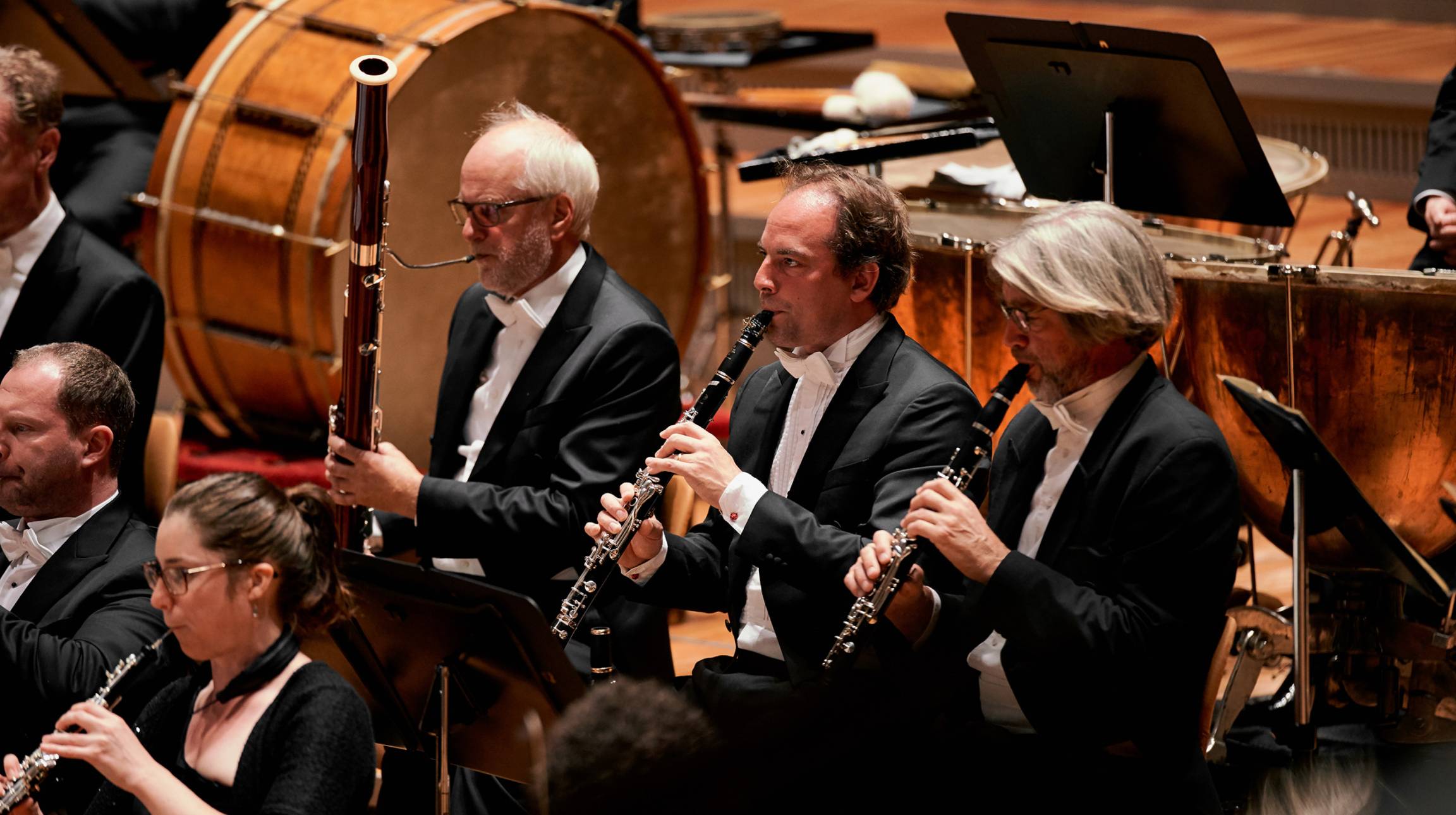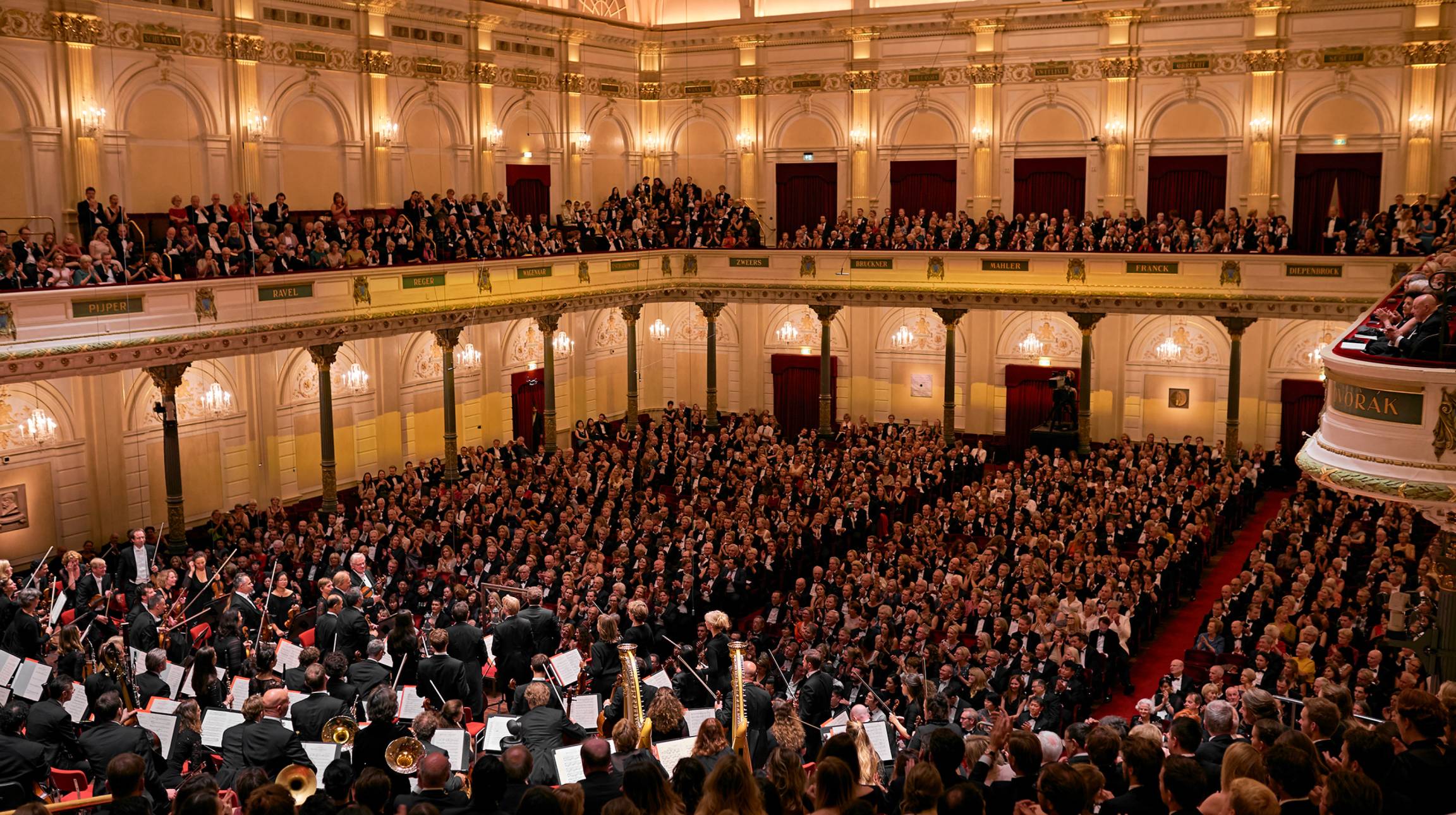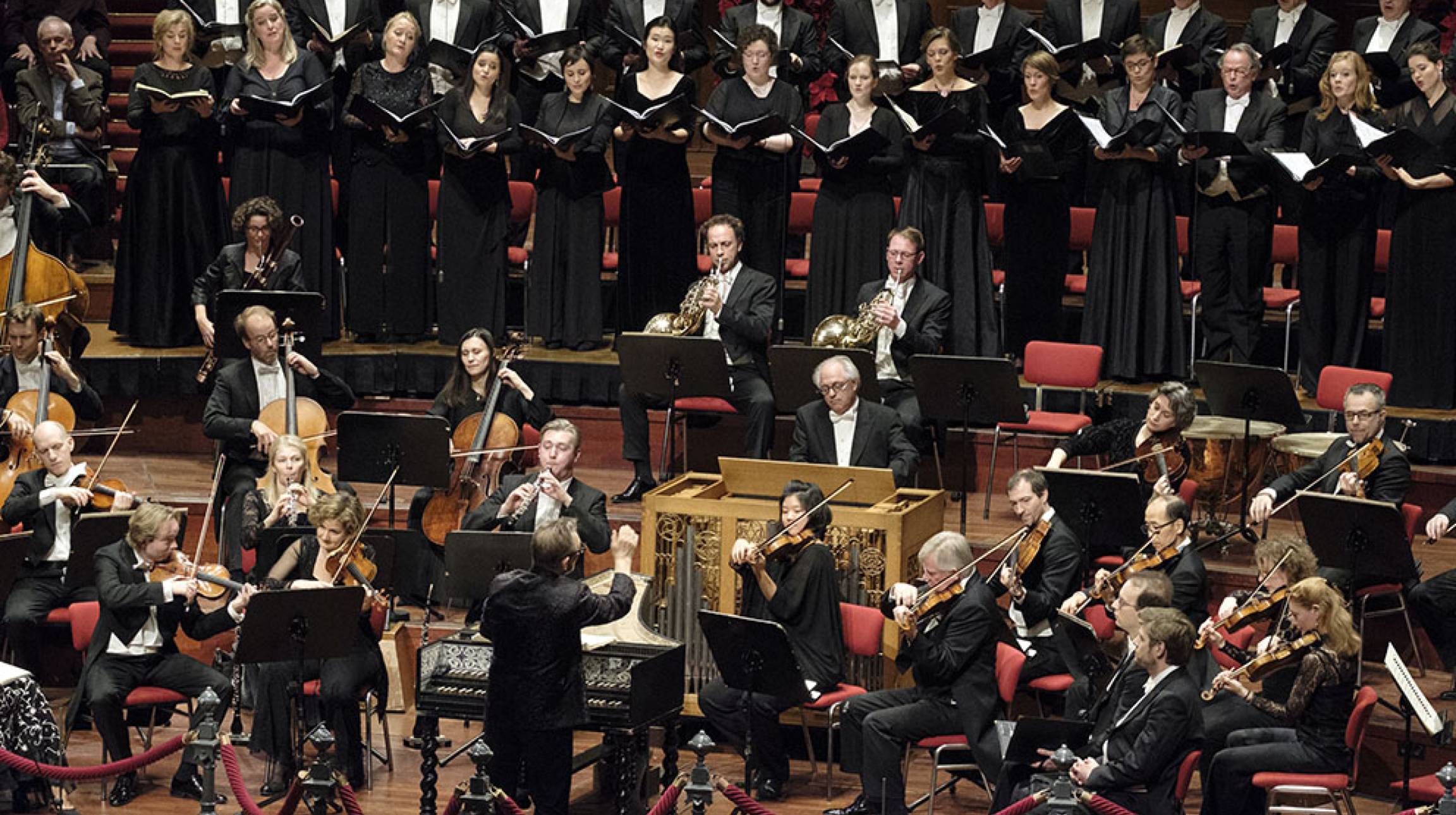About the orchestra
Outstanding musicians, great conductors, special relationships with composers and an exceptional hall. Discover all the key elements making up 135 years of history.
A history in sixteen minutes
A portrait of the Concertgebouworkest in seven chief conductors.
A very special artistic whole
Over 120 orchestral players hailing from some twenty-five countries perform together as a unique artistic whole, constantly testing their technical and musical limits on the basis of mutual trust.

‘In this orchestra, I hear everyone around me taking risks – playing softer, faster or slower than you could think possible. And that takes the courage to overcome your greatest enemy: not being afraid to make mistakes. It’s only with the trust of those around you that you can be free to test those limits. And it’s that trust which I always feel here.’
- Johan van Iersel, assistant principal cellist
A distinctive sound
The Concertgebouworkest’s distinct, individual sound is inextricably linked with the Main Hall of the Concertgebouw. Since its foundation in 1888, this beautiful ‘sounding box’, like that of a string instrument, has formed the basis for the development of the orchestra’s own individual sound in rehearsals and concerts.
The acoustics particular to the hall don’t make it easy for the orchestral players, though. In order to hear each other on stage, they have to listen to one another very closely, as if they were playing chamber music. The orchestra’s unique sound – both homogeneous and transparent at the same time – is the result.

Shaping the repertoire
The Concertgebouworkest is known the world over for its performances of the music of Mahler and Bruckner. It also upholds a number of concert traditions around Easter and Christmas with its Passion performance and the Christmas Matinee.
The orchestra has had only seven chief conductors to date. On 10 June 2022 it was announced that Klaus Mäkelä has been appointed artistic partner with effect from the 2022-23 season and will be the eighth chief conductor as from 2027.
The Concertgebouw Orchestra’s chief conductors each shaped the development of the orchestra’s repertoire in their own way.
From 1895 and 1945, Willem Mengelberg established the Dutch Passion tradition with his annual performances of Bach’s St Matthew Passion.

Eduard van Beinum was largely responsible for the acceptance of Anton Bruckner’s œuvre – not just as part of the Concertgebouworkest’s own repertoire, but also throughout the world.
Bernard Haitink would garner international acclaim with legendary Mahler recordings and internationally televised Christmas Matinees.

Riccardo Chailly led the orchestra in much opera and contemporary music.
Mariss Jansons focused on major twentieth-century composers like Shostakovich and Messiaen.
Daniele Gatti enriched the orchestra’s symphonic tradition with French repertoire and music from the Second Viennese School.
Close collaboration with world-renowned guest conductors and specialists also contributes to the orchestra’s sound and breadth of repertoire. Under the baton of Nikolaus Harnoncourt, for instance, the orchestra established a growing reputation for eighteenth-century repertoire, a tradition that it continues with Trevor Pinnock and honorary guest conductor Iván Fischer.

135 years of contemporary repertoire
During his tenure as chief conductor, Willem Mengelberg enriched the repertoire with works by living composers. Music which audiences were initially not necessarily that receptive to would go on to be incorporated in the orchestra’s core repertoire. Mengelberg’s personal relationships with Mahler, Richard Strauss, Rachmaninoff and Stravinsky resulted in close ties being established between the Concertgebouworkest and these illustrious composers. Strauss, for example, would dedicate Ein Heldenleben to Mengelberg and the orchestra in 1898.

A gathering at the Concertgebouw in 1909: (from left to right) Cornelis Dopper, Gustav Mahler, H. Freijer, Willem Mengelberg and Alphons Diepenbrock
In addition to Strauss and Mahler, such composers as Schoenberg, Debussy, Stravinsky, Ravel and Milhaud also conducted the Concertgebouworkest. The tradition is very much alive and well today, too, with contemporary composers regularly leading the orchestra in their own compositions. In recent years, John Adams, Thomas Adès, George Benjamin and Tan Dun have followed in the footsteps of such composer–conductors as Bruno Maderna, Witold Lutosławski, Otto Ketting, Luciano Berio, Pierre Boulez and Hans Werner Henze.






